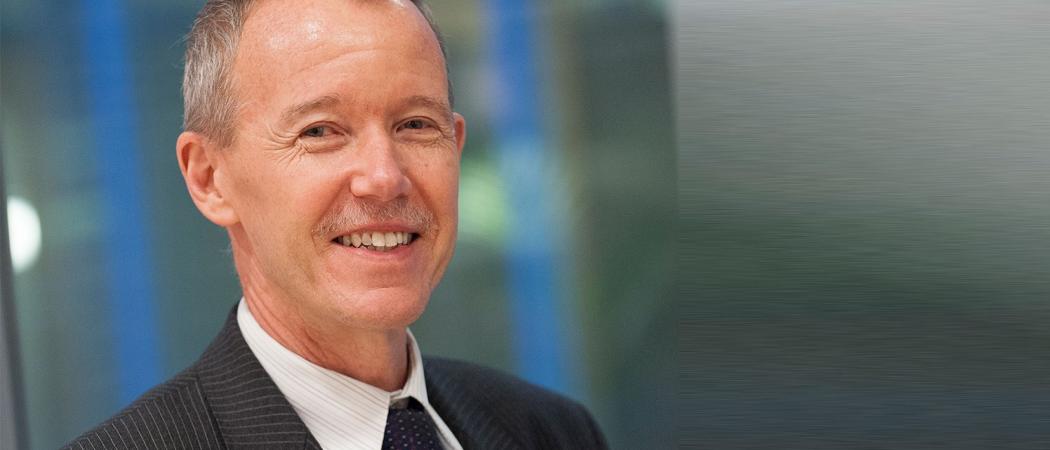Sweden’s experience in shifting the focus of EU-funded research from a thematic base to a defined, higher-impact approach could provide a template for mission-oriented research in Framework Programme 9. That would also open up FP9 to less-developed regions and third countries

Dan Andrée is senior adviser to the Ministry of Education and Research and the Swedish innovation Agency, Vinnova.
As Framework Programme 9 (FP9) begins the take shape, the emerging structure implies that the first pillar will be more of the same - a continuation of the European Research Council, Marie Skłodowska-Curie Actions and Research Infrastructures focusing on individual researchers.
Meanwhile, the second pillar will bring a number of existing strands under the umbrella of the European Innovation Council, which will have a focus on participants such as individual entrepreneurs and SMEs, that have not been at the heart of previous Framework Programmes
These two pillars will be bottom-up.
It now looks as if the third pillar will fund objective-driven research. This will include Key Enabling Technologies and embrace a limited number of specific challenges or Missions.
These defined ‘Missions’ will be set up with the aim of achieving greater impact, increasing the involvement of users across society - and engaging citizens. This pillar will be top-down in terms of drawing up the framework and objectives of each Mission, but it is intended that the implementation will be less prescriptive and highly collaborative.
Research and political goals
The need to intensify our efforts and focus research efforts is exemplified by the UN Sustainable Development Goals, which set out the path – for which read Mission – of achieving a sustainable world society by 2030.
Based on this, the EU has set clear political goals in areas including health, transport, climate, and so on.
Framework 9 Missions could be framed and guided by these political goals. One example would be a Mission to end plastics pollution. That would encompass multiple strands of basic and applied research, from new biodegradable materials, to energy efficient recycling, technologies for cleaning up existing plastics pollution and assisting developing countries to install collection and recycling systems.
How to implement Missions
Missions may set desirable objectives, but there remain many uncertainties about how they can be implemented at EU-level.
My own experience may provide some pointers. Sweden took the initiative at the Lund Conference in 2009 to shift the Framework Programme from a thematic model, to taking a challenge-based approach to tackling global and societal challenges.
In a follow-up conference in 2015 the focus was on impact and alignment of national priorities.
The 2009 conference clearly had an impact on Horizon 2020. Now the Swedish position paper feeding into FP9 wants to push the Missions agenda, saying, “FP9 should take further steps towards a challenge-driven and mission-oriented programme to achieve clear impact for society.”
Looking at participation in Horizon 2020, we can see many large universities in Sweden and elsewhere are focusing very much on the first pillar, and pursuing ERC research grants and Marie Curie student exchange funding.
That is fair enough at one level, but there is decreasing participation by universities in pillars two and three. Yet, if we are going to solve global challenges we need close interaction, with the best researchers, industry and users working together to identify challenges and deliver solutions.
So how can we achieve higher impact? We need to put users in a position where they are able to define challenges and for scientists to carry out targeted research and work with industry to translate this through to new products and services that both address the underlying problem and create new markets, creating jobs and fostering economic growth.
Challenge-driven programmes
In Horizon 2020 the calls have been less prescriptive than was the case in FP7, whilst at the same time including much more detail on the desired impact.
In this context, I would like to highlight the Swedish Innovation Agency Vinnova’s ‘Challenge Driven Programme. A key element of this programme is that applicants are expected to define their approach, the expected results and solutions, and the targeted short-term effects.
Applicants frame projects in three stages:
- definition phase, addressing challenges contributing to the stated mission;
- substantial R&I project;
- demonstrating and implementing solutions.
The process ensures end user participation, includes all partners and provides the flexibility to adjust the scope of a project, if appropriate.
At the same time, the inherent flexibility is attractive to researchers. The key to the programme is its ability to foster collaboration between academia, public sector and industry.
From the Swedish experience, it is clear that challenge-driven applications should be assessed not only on the proposed endpoint, but also on excellence in collaboration and the potential for impact at all stages. Evaluation should focus on the approach described, the participants and how they will interact, and the potential of a projected outcome to achieve a mission’s targets and high-level objectives.
Experience from Sweden also shows this three-stage approach has what I call a natural ‘widening-effect’ in that users from different parts of Sweden are included as a way to demonstrate impact.
Replicated at an EU-level this would imply participants from less developed regions could join the project in the 2nd or 3rd phase, in particular, improving impact for the EU as a whole. Similarly, partners from third countries could be more easily included.
Some adaptation of this three-stage approach has to be done at EU level. For example, the third phase should open up for a wide range of support from grants to loans, and also address the issue of legislation that may be hampering the set objectives.
In summary, in order to show more impact and attract the best researchers, users and industry, we need a less prescriptive approach in calls. The responsibility to define challenges and impact within a given mission should be given to the applicants.
After all, applicants know better than officials at an EU or member state level, what is needed to achieve high level goals in a Mission.





 A unique international forum for public research organisations and companies to connect their external engagement with strategic interests around their R&D system.
A unique international forum for public research organisations and companies to connect their external engagement with strategic interests around their R&D system.